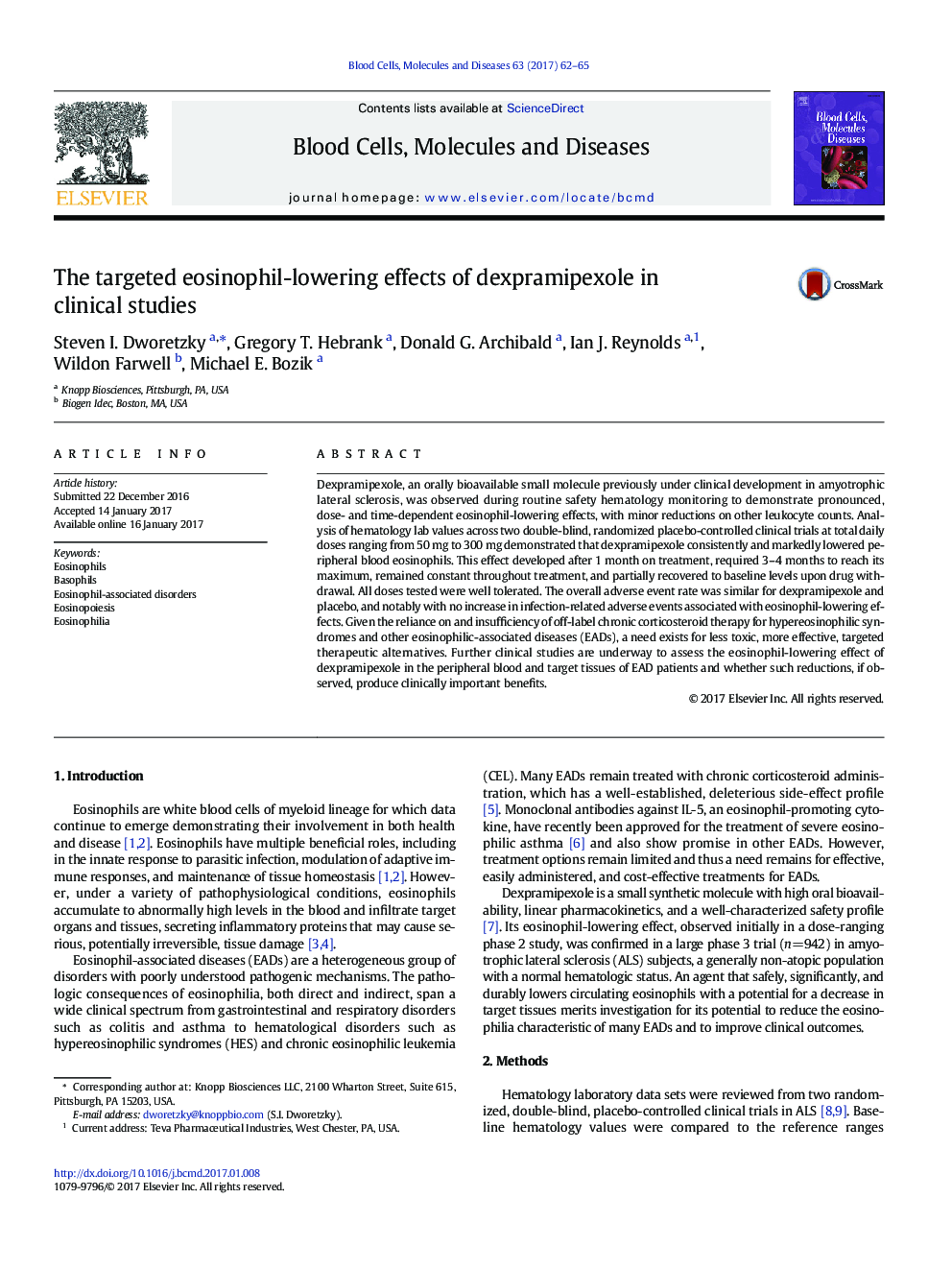| Article ID | Journal | Published Year | Pages | File Type |
|---|---|---|---|---|
| 5591480 | Blood Cells, Molecules, and Diseases | 2017 | 4 Pages |
Abstract
Dexpramipexole, an orally bioavailable small molecule previously under clinical development in amyotrophic lateral sclerosis, was observed during routine safety hematology monitoring to demonstrate pronounced, dose- and time-dependent eosinophil-lowering effects, with minor reductions on other leukocyte counts. Analysis of hematology lab values across two double-blind, randomized placebo-controlled clinical trials at total daily doses ranging from 50Â mg to 300Â mg demonstrated that dexpramipexole consistently and markedly lowered peripheral blood eosinophils. This effect developed after 1Â month on treatment, required 3-4Â months to reach its maximum, remained constant throughout treatment, and partially recovered to baseline levels upon drug withdrawal. All doses tested were well tolerated. The overall adverse event rate was similar for dexpramipexole and placebo, and notably with no increase in infection-related adverse events associated with eosinophil-lowering effects. Given the reliance on and insufficiency of off-label chronic corticosteroid therapy for hypereosinophilic syndromes and other eosinophilic-associated diseases (EADs), a need exists for less toxic, more effective, targeted therapeutic alternatives. Further clinical studies are underway to assess the eosinophil-lowering effect of dexpramipexole in the peripheral blood and target tissues of EAD patients and whether such reductions, if observed, produce clinically important benefits.
Keywords
Related Topics
Life Sciences
Biochemistry, Genetics and Molecular Biology
Molecular Biology
Authors
Steven I. Dworetzky, Gregory T. Hebrank, Donald G. Archibald, Ian J. Reynolds, Wildon Farwell, Michael E. Bozik,
